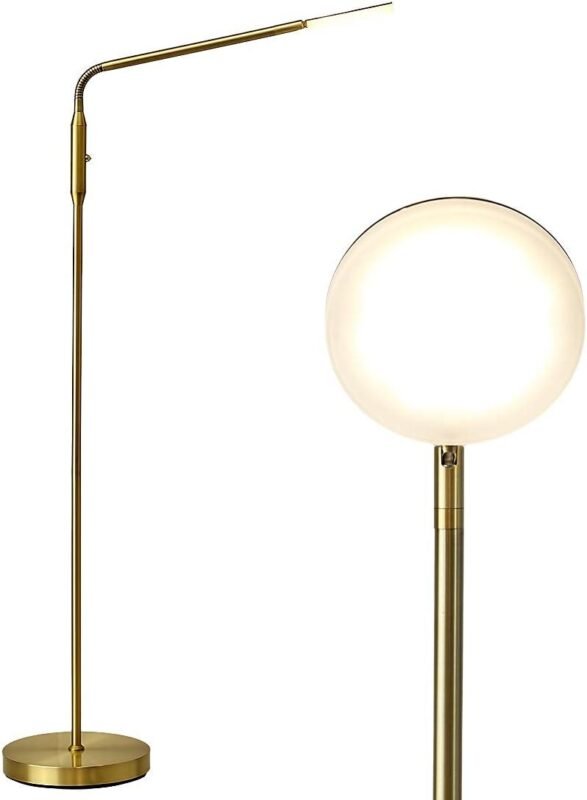What are some plants that can help to purify the air in a living room?
Creating a fresh and healthy living habitat is somthing many of us strive for, and one simple, natural way too achieve this is by bringing the right plants into your living room. Beyond their beauty, certain indoor plants have been proven to help purify the air by removing harmful toxins and increasing oxygen levels. In this article, we’ll explore some of the best air-purifying plants that not only enhance your décor but also contribute to a cleaner, healthier home atmosphere. Whether you’re a seasoned plant enthusiast or just getting started, these green companions can make a notable difference in the quality of the air you breathe every day.
Benefits of Having Air-Purifying Plants in Your Living Room
Incorporating air-purifying plants into your living room does more than just enhance aesthetic appeal; they actively improve the quality of the air you breathe. Many indoor plants absorb harmful toxins such as benzene, formaldehyde, and trichloroethylene, commonly found in household products, helping to reduce indoor pollution naturally. This results in fresher air and a healthier environment,which can boost your mood,increase productivity,and even improve sleep patterns. Beyond air quality, these plants also contribute to better humidity levels, which can soothe dry skin and prevent respiratory discomfort.
Maintaining a few key species in your living space offers an easy and effective way to combat indoor pollutants.Here are some often overlooked perks of having these green companions:
- Stress Reduction: The presence of greenery has been linked to decreased stress and anxiety.
- Noise Absorption: Certain plants can help muffle background noise for a more peaceful atmosphere.
- Natural Decoration: Plants double as living décor, adding texture, color, and vibrancy to your home.
- Low Maintenance: Many air-purifying plants thrive with minimal care, perfect even for beginner plant owners.
| Plant | Key Benefit | Ideal Placement |
|---|---|---|
| Spider Plant | Removes carbon monoxide and formaldehyde | Near windows |
| Snake Plant | Produces oxygen at night, improves air quality | Bedroom corners |
| Peace Lily | Filters out ammonia and benzene | Shaded areas |
| Boston Fern | Enhances humidity and traps dust | Bathrooms or humid spots |
Top easy-to-Care-For Plants That Improve Indoor Air Quality
Enhancing your living room’s air quality doesn’t have to be a chore, especially with the right plants that thrive effortlessly indoors. plants like the Snake Plant, also known as mother-in-Law’s Tongue, are revered for their ability to filter toxins such as formaldehyde and benzene from the air, all while needing minimal water and indirect light. Another excellent option is the Spider Plant, a resilient, fast-growing choice that not only purifies the air but also adds a refreshing touch of green with its arching leaves and baby “spiders” that can be propagated easily.
For those wanting a splash of color, the Peace Lily is both stylish and functional, removing airborne mold spores and providing elegant white blooms without demanding much upkeep. simultaneously occurring, English Ivy works wonders in reducing airborne fecal particles and formaldehyde, and it can be displayed hanging or trailing down a shelf for an attractive, natural accent. Below is a fast reference table summarizing some of the best easy-care air-purifying plants to keep your living area fresh and inviting:
| Plant | Key air Benefits | Care level |
|---|---|---|
| Snake Plant | Filters formaldehyde,benzene | Very Low |
| Spider Plant | Reduces carbon monoxide,xylene | Low |
| Peace lily | Removes mold spores,vocs | Medium |
| English Ivy | Improves airborne fecal matter and formaldehyde | Low |
How to Choose the Right Air-Purifying Plants for Your Space
When selecting air-purifying plants for your living room,consider not only their aesthetic appeal but also their environmental needs. Lighting conditions play a crucial role; some plants thrive in low light, perfect for dim corners, while others require luminous, indirect sunlight. additionally, think about the level of care you can consistently provide. If you tend to forget watering, opt for hardy species like snake plants or pothos that endure occasional neglect without losing their air-cleaning effectiveness. Size and growth habits are also critically important to ensure your plants fit comfortably in your space without overwhelming it.
It’s useful to match your air-purifying goals with plant characteristics. For example, some species are excellent at filtering out volatile organic compounds (VOCs), while others excel at increasing indoor humidity or releasing oxygen at night. Here’s a quick guide to common air-purifying plants highlighting their key benefits and care needs:
| Plant | Ideal Light | Air Benefit | Care Level |
|---|---|---|---|
| Spider Plant | bright indirect | Removes Formaldehyde | Low |
| Snake Plant | Low to Bright | Filters Benzene & Trichloroethylene | Very Low |
| Peace Lily | Low Light | Absorbs Mold Spores | Medium |
| Areca Palm | Bright Indirect | Humidifies & Filters Toluene | Medium |
Tips for Maintaining Healthy Plants to Maximize Air Purification
Ensuring your air-purifying plants thrive requires a balance of proper care and attention to their specific needs. Consistent watering is crucial, but avoid overwatering as it can lead to root rot.A good rule of thumb is to let the top inch of soil dry out between waterings. Equally important is providing sufficient indirect sunlight; many popular air-purifying plants, like the peace lily or snake plant, prefer filtered light rather than direct harsh sunlight. Additionally, regularly wiping leaves with a damp cloth removes dust and maximizes the plant’s ability to absorb toxins and deliver fresh oxygen.
To keep your plants healthy and effective at cleaning your living room’s air, consider the following care tips:
- Use well-draining soil to prevent water stagnation and root diseases.
- Maintain humidity levels by misting or placing plants near a humidifier, especially for tropical varieties.
- Fertilize moderately during the growing season to provide essential nutrients without overfeeding.
- Rotate plants periodically to ensure even light exposure and balanced growth.
| Plant | Light Requirement | Water Needs | Optimal Humidity |
|---|---|---|---|
| Snake Plant | Low to bright indirect | Low | Moderate |
| Peace Lily | Bright indirect | Moderate | High |
| Spider Plant | Bright indirect | Moderate | Moderate |
Final Thoughts
Incorporating air-purifying plants into your living room is a simple and natural way to enhance the air quality while adding a touch of greenery to your space. Whether you choose the classic snake plant, the adaptable spider plant, or the elegant peace lily, these plants not only brighten your room but also work quietly to absorb toxins and release fresh oxygen. By selecting the right plants for your environment and caring for them properly, you can create a healthier, more inviting atmosphere for you and your loved ones to enjoy every day. So, why not bring a little nature indoors and breathe easier with the help of these wonderful green companions?












